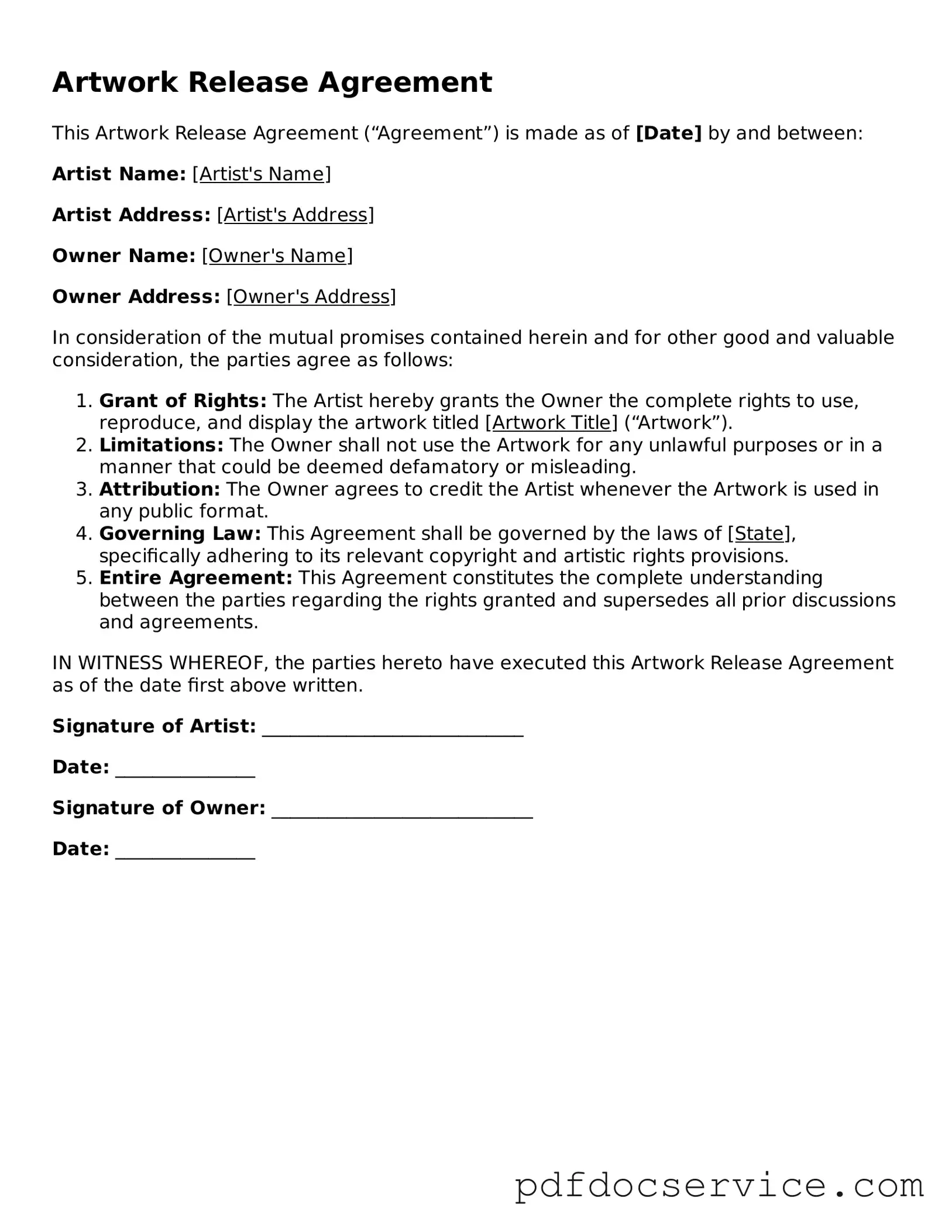An Artwork Release form is a legal document that grants permission for someone to use a piece of artwork. This can include paintings, drawings, photographs, and other creative works. The artist gives up certain rights, allowing the recipient to reproduce, distribute, or display the artwork as specified in the form.
Anyone who wants to use someone else's artwork should use an Artwork Release form. This includes:
-
Businesses using artwork for marketing or advertising
-
Publishers using illustrations in books or magazines
-
Individuals displaying artwork in public spaces
Artists themselves may also use the form to clarify how their work can be used by others.
The Artwork Release form typically includes:
-
The name and contact information of the artist.
-
The name and contact information of the person or organization receiving the rights.
-
A description of the artwork, including title and medium.
-
The specific rights being granted (e.g., reproduction, distribution).
-
The duration of the agreement.
It may also include any compensation details, if applicable.
Do I need to pay for an Artwork Release?
Payment for an Artwork Release depends on the agreement between the artist and the recipient. Some artists may offer their work for free, while others may charge a fee. Always discuss this aspect beforehand to avoid misunderstandings.
Yes, you can modify the Artwork Release form to fit your specific needs. However, both parties must agree to any changes. It’s essential to ensure that all modifications are clear and that both the artist and the recipient understand their rights and obligations.
Yes, an Artwork Release form is legally binding as long as it is properly executed. This means both parties should sign and date the form. It’s a good idea to keep a copy for your records to refer back to if needed.
If you don’t use an Artwork Release form, you may face legal issues. Without a formal agreement, the artist retains all rights to their work. This means they could take action against you for unauthorized use, which can lead to penalties or financial compensation claims.
Absolutely! An Artwork Release form is suitable for all types of artwork, including digital creations. Whether it's a graphic design, digital painting, or photo, the form can clarify how the digital artwork can be used and shared.
You can find Artwork Release forms online through various legal document websites. Many offer templates that you can customize. Alternatively, consulting with a legal professional can ensure you have a form that meets your specific needs.
